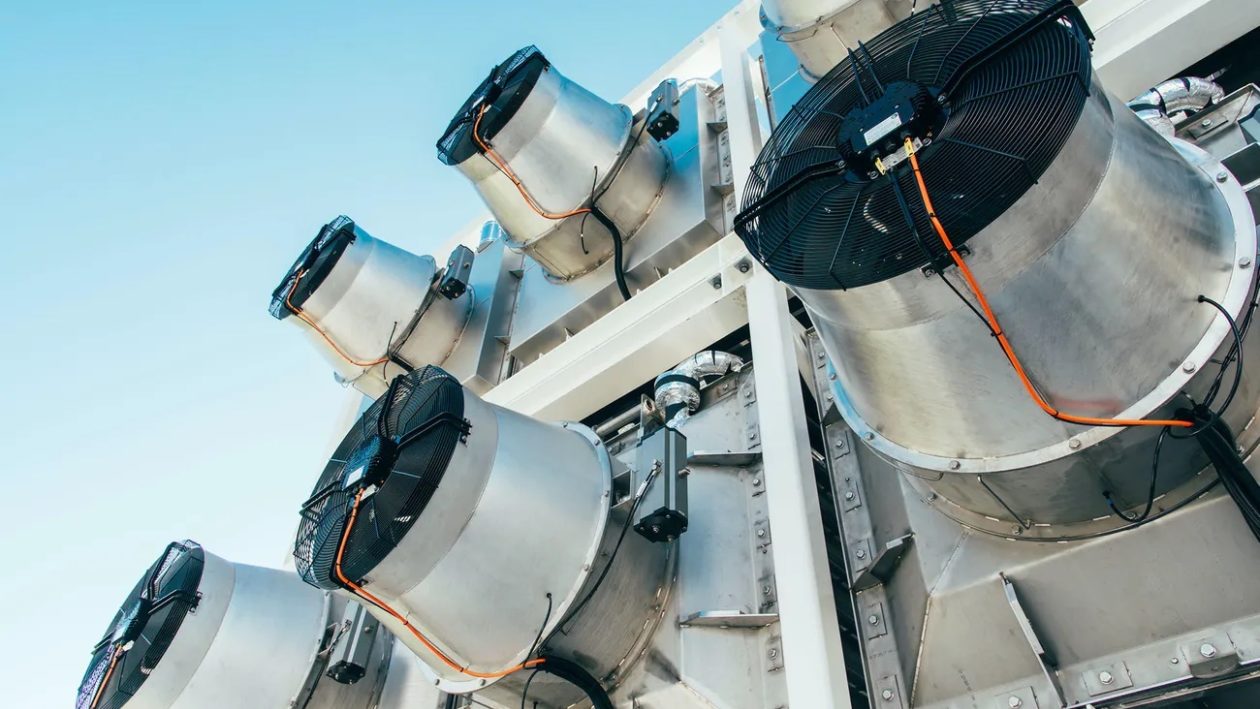The Future is Here: Carbon Capture for Your Industrial Facility

The Inflation Reduction Act’s financial incentives are set to catalyze the growth of carbon capture and sequestration projects. Learn about Unison Energy’s CCS solutions.
Industrial sites seeking sustainable solutions to achieve carbon neutrality can now turn to carbon capture and sequestration (CCS). The Inflation Reduction Act has sparked the development and construction of CCS technologies, offering time-sensitive financial incentives. Unison Energy is at the forefront of supporting CCS, with modular solutions projected for deployment within the next few months. The clock is ticking, and the time to act is now.
Understanding Carbon Capture and Sequestration (CCS)
Also known as carbon capture and storage, CCS is a potent tool to mitigate greenhouse gas emissions, particularly for energy-intensive manufacturing plants and industrial sites.
In simple terms, CCS is a process that captures carbon dioxide from an industrial process or combustion emissions stream before they are released into the atmosphere and stores them safely in geological formations or recycles them into commercial or chemical processes.
Separating carbon dioxide from emission streams can be a complex process. Moreover, the transportation of the captured carbon can prove costly due to the infrastructure, such as pipelines, required to connect the plant to secure underground storage sites or other suitable applications. Despite these challenges, recent tax incentives are propelling the growth and development of new CCS technologies that could be a sustainability game-changer for industrial facilities with high thermal energy requirements that drive their carbon intensity scores.
The U.S. has seen an increase in carbon capture projects and technologies. 1PointFive and Carbon Engineering are deploying modular direct air capture (DAC) plants. Aemetis is developing a CCS injection well, while B.P. and Linde are partnering to store carbon from Texas hydrogen production. These are just a few of the many projects across the country that are already in operation or will be soon.
Leveraging Carbon Capture in Industrial Facilities Today
CCS plays a vital role in achieving net-zero emissions, given its ability to capture carbon from industrial sectors that are difficult to decarbonize. Many industrial facilities generate CO2 as a part of their manufacturing process or have an industrial process that depends on process heat, steam, or chilling. Nearly a third of a facility’s emissions may originate from the boilers used for these processes.
Microgrids using technologies like combined heat and power (CHP), solar, and batteries can support both electric and thermal processes for industrial sites, significantly reducing emissions compared to boiler usage and utility power. A CHP engine leverages natural gas in a highly efficient manner, potentially slashing facility emissions by up to 60% and decreasing carbon intensity scores by 5-8 points.
On top of this efficient gas usage, it’s now possible for a facility to reach net zero emissions by combining CHP and CCS. CCS can capture post-combustion emissions from the CHP system and carbon from boilers and other flue gas carbon emission sources.
Technology combining CHP systems with post-combustion CCS is currently in the demonstration phase, with scalable modular solutions available within the next 6-18 months. This progress has been catalyzed by recent tax incentives promoting CCS advancements.
The Inflation Reduction Act: A Game Changer for Carbon Capture
The Inflation Reduction Act introduces incentives that significantly enhance the economic viability of CCS projects. This legislation renders CCS equipment and infrastructure financially feasible, promoting cleaner and more efficient manufacturing and industrial processes. These financial incentives are expected to trigger a wave of CCS projects as companies strive to achieve net-zero targets.
Carbon capture technology has been around for years, although associated costs prevented broader application, even with previous tax incentives. The initial 45Q tax credit for CCS was established in 2008, initially providing $10/tCO2 stored via enhanced oil recovery (EOR) and $20/tCO2 stored in geologic formations. In 2018, the Bipartisan Budget Act reformed 45Q to broaden eligibility and increase credits to $35/tCO2 for EOR and $50/tCO2 for geologic storage.
The IRA augments the Section 45Q tax credit for U.S. CCS projects, extends the construction deadline to January 1, 2033, reduces the annual capture requirements, and introduces a limited, 5-year direct pay option, along with provisions for transferring CCS tax credits to third-party investors.
The blend of enhanced federal tax credits and state-level tax and economic incentives make CCS projects increasingly attractive to investors and developers. This includes higher potential tax credit rates, reaching from $65/tCO2 for EOR to $85/tCO2 for point source capture projects and $180/tCO2 for direct air capture projects.
The Inflation Reduction Act also stimulates investment in CO₂ pipeline infrastructure. As these pipelines necessitate compressors with large electric loads, Unison Energy partners with CCS pipeline vendors to install systems for clients and power the process through our microgrids. Existing pipeline vendors include Kinder Morgan, Denbury, Talus, and Oxy, while emerging vendors include Summit Carbon Solutions, Navigator CO2, Wolf, and Tallgrass.
Unison Energy’s CCS Solution for Industrial Sites
Unison Energy is poised to support CCS projects today, helping facilities optimize the carbon capture incentives offered by the Inflation Reduction Act, in addition to achieving 5-20% utility bill savings from our microgrids.
We design our systems for reliable power, which may involve using natural gas, although our future-proof systems can also use renewable natural gas or hydrogen for fuel. By integrating CCS to counteract the fuel in our microgrids, we can provide both resilience and sustainability for your facility, helping you reach your energy transition goals.
For more information on how carbon capture could benefit your facility, get in touch.
Image credit: Climeworks
Energy insights, delivered
Subscribe for more content.
